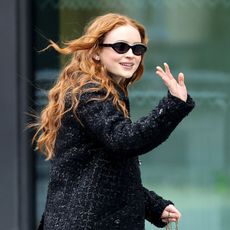33 Black Fashion Powerhouses Name Changes They'd Like to See in the Industry
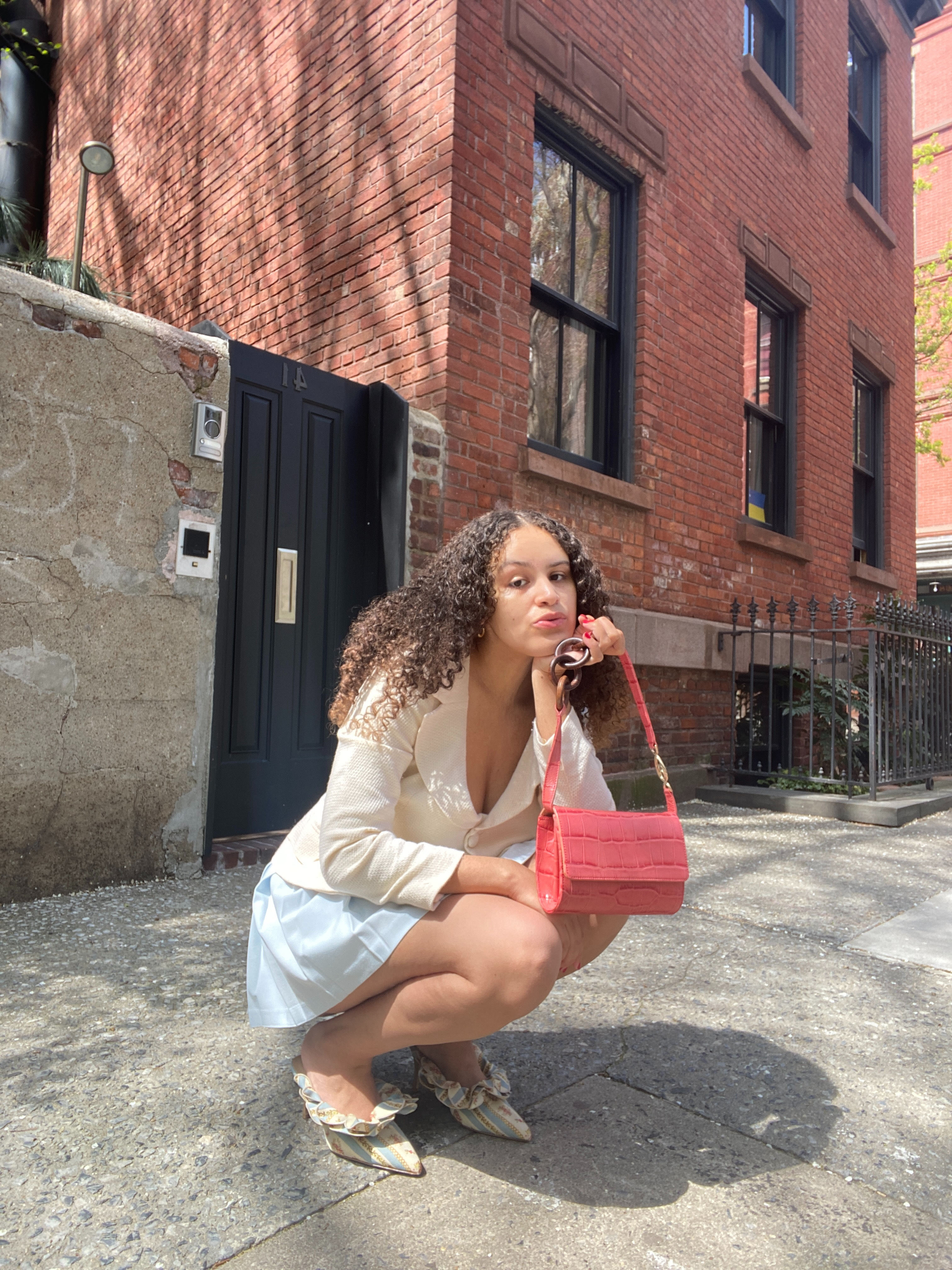
It’s no secret that the fashion industry has struggled with inclusivity and diversity for a long time. It’s with this in mind that we’re launching our Changes series, which will give voice to underrepresented groups on the changes they’d like to see in their industry. Today, we’re passing the microphone to some of the most influential Black stylists, photographers, writers, models, designers, and style consultants.
From the glossy pages of magazines to the runway, women and men of color like myself have never been fully represented in the fashion industry. Beyond the visual clues of inclusivity, historically, rarely do we hold a seat at the table or power behind the scenes. On the off chance, we do make it to the table, we often find ourselves tokenized and expected to speak on behalf of the experiences of all people of color. With the industry's long history of insensitive designs, and continuous centering of white stories and Eurocentric beauty standards, we have to ask ourselves: What do we do? What changes can be made to make the fashion world represent the real world?
In search of those answers, we asked 33 Black experts across the industry about what changes they want to see. Of course, they can’t speak to every problem in the industry, and it’s not the job of people of color to solve the issues of inclusivity—white people need to be true allies in changing the industry. Rather I see today’s conversation as a jumping-off point for deciding, designing, and dreaming what the future of the fashion industry looks like through the unique lens of the Black perspective.
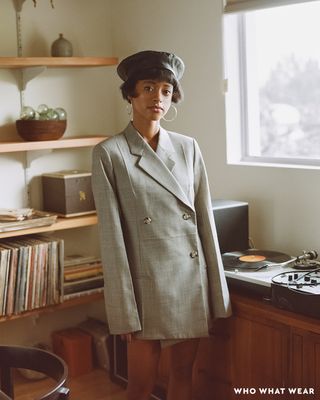
"I think we are just now reaching the point where we are seeing more models and celebrities of color becoming the faces of certain big beauty and fashion brands, which the young Black girl in me is very excited to see, but the adult me wants to see people of color being the ones making the big decisions at these companies. I want there to be more creative and marketing directors who are Black women. It’s important to have people of color in front of and behind the scenes. That’s true inclusivity. You’re not a diverse brand because you have one Black model or celebrity representing your brand; you’re a diverse company because you have people from all walks of life, different races, genders, and sexualities working together as a team creating beautiful work.” — Candace Reels, Founder of Female Collective
"I want to see more people of color on the production side of the industry. There are times where I go on set and I’m the only Black person or only person of color, which isn’t right. Diversity shouldn’t start and end with the campaign or runway; it needs to be reflected in every aspect of the industry.” — Leomie Anderson, Model
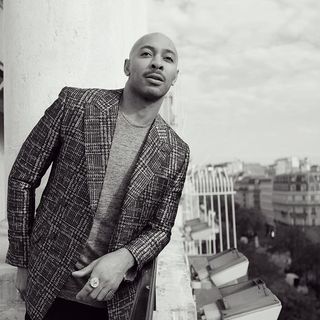
"One thing I’ve noticed that I would love to see more of and that I think is already working within the industry is that social media has made things more democratic. We’re in a cultural renaissance, so to speak, where people now have the power to drag a beauty brand for its lack of inclusive shades—or uplift one. And I’m hopeful for the future… Younger generations are shopping by their values and are holding companies accountable within the fashion industry, beauty industry, and beyond. But even with that, speaking up as consumers is just a start. At the top level, the opinions of the few need to become the opinions of the many. We should be hiring more Black, Brown, Pakistani, and all different types of people at the executive level, not just as interns. Because the lack of inclusivity directly shows through the work they’re putting out.
"We’re in 2019, the age of information where you can literally google anything to know if it’s controversial or not. I think it’s laziness on the part of these people to be pushing this insensitive stuff out, and to an extent, there is a direct stirring of the pot. You’ve heard of the idea that bad press is good no matter what, and I think a lot of these brands are willing to put out controversial work just to get you talking about the brand. So within the industry, and as consumers, we need to continue to have conversations around what we expect and are willing to accept from brands.
"Inclusivity doesn’t just mean color of the skin, it’s beyond that. What needs to happen in order for the industry to change is for there to be more honest conversations; there needs to be a sharing of more ideas coming from everywhere. Because if we’re not having an honest conversation, the firewalls between us grow larger." — Sir John, Celebrity Makeup Artist and Co–Executive Producer of American Beauty Star on Lifetime
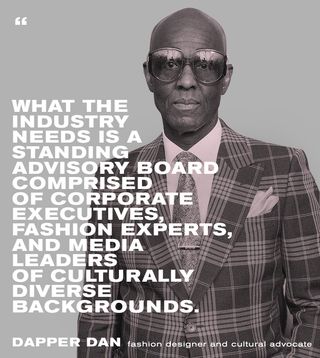
"I think what the industry needs is a standing advisory board comprised of corporate executives, fashion experts, and media leaders of culturally diverse backgrounds to promote inclusivity and cultural consciousness within all luxury brands." — Dapper Dan, Fashion Designer and Cultural Advocate
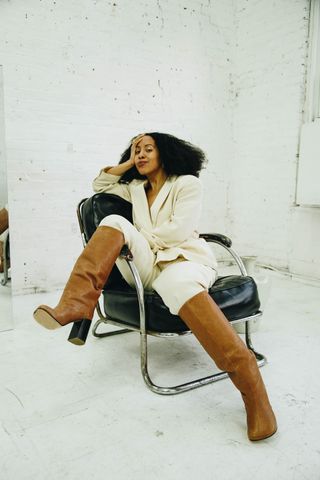
“I think this has been a particularly grueling Black History Month for those POCs who work within fashion—what with the Gucci blackface sweater and Burberry noose sweatshirt scandals hitting back to back. This is nothing new: Veiled racism proliferated as fashion or art is a really tried-and-true tactic of designers at this point. But I was left with a new sense of disenchantment with the industry; a kind of What’s it all for? Why am I doing all this? existential crisis. I think I landed upon this: In order for diversity to really take hold in fashion, we have to not only allow for new gatekeepers and cultural ambassadors to emerge, but we also have to figure out how to keep them in power. Retention is paramount, and that comes from creating real, equitable workspaces for POCs to shine and thrive, to not feel silenced or siloed or pressured to fix all the problems of racism within the industry themselves. We need more white allies to be outspoken and supportive and learn when to give up power and when to speak. The onus is not on POCs alone.” — Marjon Carlos, Journalist, Editor, and Public Speaker
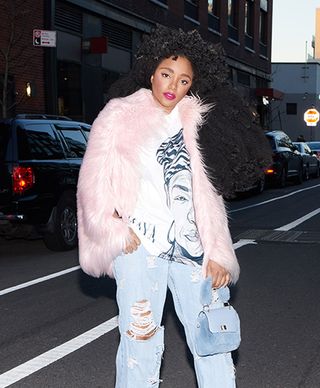
"The year is 2019. Blackface. Cultural appropriation. Lack of diversity and inclusivity. We are still dealing with these issues in the industry not only because there is a lack of diversity among talent on magazine covers, in campaigns, and on runways but in the board rooms, on creative teams, among casting directors, artistic directors, and so on. Some within the industry treat diversity and inclusivity as a trend. Now it is cool to support a cause and speak up, which I’m all for, however, taking a stand for something shouldn’t be treated as a trend. Diversity shouldn’t be treated as something that is trendy or cool. My skin color isn’t a quota to fill every few months or so—in one season and out the next.
We must shift the paradigm so that diversity is just as consistent and mundane as the many white countenances you see inundating magazines, runways, creative teams, and executive positions. Also when I discuss inclusivity, I must also specify size inclusivity as well. Time and time again we see homogeneous slender looks embraced and celebrated in the beauty and fashion industry. Women come in all shapes and sizes, and the size of a woman is not indicative of beauty, albeit, many in the industry believe the opposite. The majority of women in the U.S. are a size 14/16. I am a size-12 Black woman with curves. My breast size is a DD. I have hips, and my butt is not diminutive. How insane is it that those descriptive words are contemplated as an anomaly in the fashion industry or not considered fashionable or marketable to some brands? Discussing these matters is not about begging for a seat at a table that is not receptive. It is about bringing awareness, creating our own tables, and bringing diversity to the forefront to implement change and break stereotypical ideals of beauty in the industry.” — TK Wonder, Music Artist, Writer, and Model
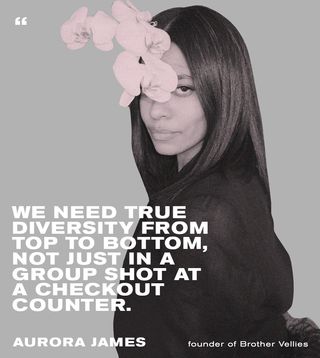
“I am really ruling out casting within the topic of diversity in 2019. I need more. Too many businesses have used casting as a quick fix for their diversity problems. Hiring a woman of color to be your model for one day will not address the internal dynamics of a business the other 364 days a year. Do you have people of color in your product development team? In your marketing team? In your creative team? We need true diversity from top to bottom, not just in a group shot at a checkout counter.” — Aurora James, Founder of Brother Vellies

"I wish Black creatives, designers, and entrepreneurs were highlighted by big platforms more throughout the year and not only for Black History Month, because we work hard all year long. We are just as talented and hardworking, and we provide services, goods, and create cultures that are used around the world. I feel that we’re not celebrated genuinely. We’re only approached if there’s a specific theme that can sell our stories. That’s why it’s important to start with celebrating ourselves and not wait for others to do it.” — Paola Mathé, Creative Director, Photographer, and Designer of Fanm Djanm Headwraps
"I would like to see diversity at the table of those who make the decisions in companies. I think that until we see that, we will continue to only see campaigns of people who essentially look like those decision makers, who I believe are majority white. It’s a trickle-down effect. Having the odd token here and there is more insulting than it is anything else because it screams of trying to be PC, and I think everyone sees through it. Until we see others that look like me both in front and the back of the camera as well as up and down the entire fashion hierarchy being hired, we will continue to only see one type of person dominating the industry.” — Karen Blanchard, Influencer
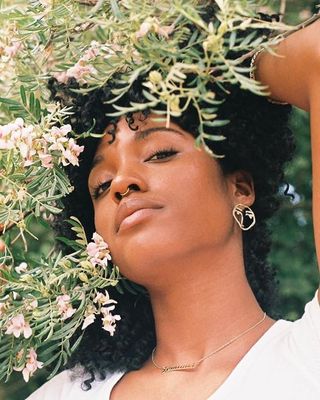
"I think the industry needs to starts authentically pushing for diversity. The industry has been primarily relying on diversity in a very shallow way, usually only using bodies to show off diversity rather than have it as core value. When the people in the board rooms are all white but the imagery is all people of color, it creates an uncomfortable dichotomy. Why is an all-white room deciding to use all-Black models? Where are the Black opinions? Black people are more than a tool to further a woke aesthetic. That’s how you end up with brands doing all-Black campaigns but then continuing to drop racist products and offensive ads. Change does not just stop at what we see; it must start at the ground up and must be integrated into the building blocks of the fashion industry and how the industry navigates as a whole.” — Gabrielle Richardson, Curator and Model
"It’s sad that we even are doing this in 2019. I think it’s time for these brands to stop being selfish and open up the conversation for more perspectives to be included in the conversation. We have watched several brands make seriously bad decisions when it comes to product design, and this will continue happening in the future if they don’t start allowing other cultures in on the process. The world knows that our culture is very influential and profitable, yet we have no positions in these brands we help fund with our dollars. We are not a fan or trend. We are significant in pushing pop culture forward.” — Jérome Lamaar, Creative Director
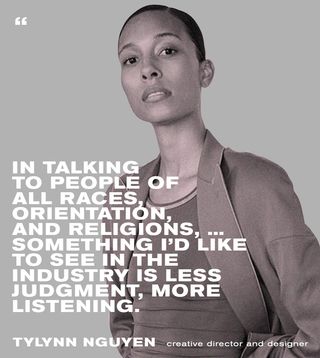
“The human experience is quite complicated. In talking to people of all races, orientation, and religions, I realize people just want to know they are loved. Something I’d like to see in the industry is less judgment, more listening, and being slow to make an opinion before we know all the facts.” — TyLynn Nguyen, Creative Director and Designer

"The changes I would like to see are pretty simple. First, stop using nepotism as the only way to hire fashion journalists, creatives, stylists, and entertainers. The reason we aren’t seeing diversity in the industry is because the people at the top aren’t diverse themselves. They’re still mostly white men who then hire their friends and family. Secondly, we must start recruiting earlier. Media companies should do more recruiting in colleges and host more speaking events in those spaces. Thirdly, companies should provide more scholarships and grants for minorities so they can afford to take on fashion and media internships. Lastly, it’s not enough to just have just senior editors and writers on your team be Black; we should have more CEOs, CFOs, and COOs who are Black in those roles because the power lies within their hands. The business power, the financial power, and the long-term strategy are all impacted by their decisions as the changemakers. However, until media companies and fashion brands decide to change their leadership and executive teams, they will always be 10 steps behind. It takes diverse voices and cultures to be ahead. Never forget that Black culture is constantly imitated, but we are trendsetters, therefore, we will always be ahead.” — Nana Agyemang, CEO a d Founder of EveryStylishGirl

“I would like to see the industry embrace diversity on a level that extends beyond the facade of diverse campaigns and editorial spreads. Diversity needs to extend itself in this industry from the top to the bottom. We need diversity at the decision-making level in order for there to be any real change in the industry. I’d like to see an inclusion of more diverse identities in every position in the fashion industry.” — Myles Loftin, Freelance Photographer
“There have been numerous times that I’ve had certain opinions or suggestions that I wouldn’t share because I felt they would not be valued or taken seriously, and I often think about what could be done to create an environment where everyone feels comfortable speaking up. I think only real change can happen when companies hire people with varied backgrounds and characteristics and create a climate where everyone feels like they can express themselves without being ridiculed or marginalized. There is also real value in networking and mentorship. Over the years, I have been fortunate enough to meet and work with people who have profoundly helped shape my career path and have encouraged me to share my ideas and beliefs. I hope to help people just starting out find their voice as well. Once workplaces create that safe space—a place where inclusivity is identified as a core value—they will be able to reach a wider range of people, expand their influence, and eliminate many of the missteps that plague the industry.” — Ericka Samuel, Senior Account Executive at PR Consulting

"I want to get to a point where everyone feels a responsibility to making the industry more inclusive. I want that responsibility to extend from the first stitch to the front row. You think of something like Fenty Beauty by Rihanna, and you view it as this disruptor in the beauty industry, but it’s actually a siren call. There’s so much more that can be done when thinking proactively about inclusivity, instead of reactively in a state of emergency. Through scholarship, literature, and even social media, we have windows into other people’s experiences. We have so many opportunities to learn about others and how to serve larger constituencies. For example, Jillian Mercado utilizes Instagram Stories to share how difficult it can be to travel as a disabled model. You should ask yourself, What can I do with that information? It’s now my responsibility. How can I help ensure that my show or casting does not perpetuate these same injustices? We don’t have to be in a state of emergency to do things better. Preventative care is how we should be thinking about inclusivity.” — Kimberly Drew, Writer and Independent Curator
"I would love to see more Black women hired as creative talent on set. There is a well of untapped hard-working, and incredibly skilled talent that has been underutilized within the fashion industry—art directors, stylists, photographers, hairstylists, makeup artists, and talent bookers—that I believe offer a unique perspective. I love that so many Black models are booking top shows and campaigns now. It’s time to match that progress behind the lens as well.” — Alana Wright, Freelance Makeup Artist
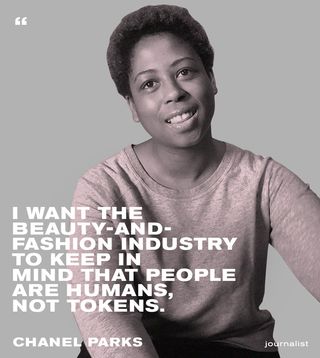
"I want the beauty-and-fashion industry to keep in mind that people are humans, not tokens. It goes beyond adding the one Black girl and one Asian girl into the mostly white campaign. And more than that, it means showing that while ethnicity and race matter in what they like to call ‘diversity,’ so do things like body shapes, disabilities, non-binary/gender queerness, and age. Give me range, or give me nothing at all!” — Chanel Parks, Journalist
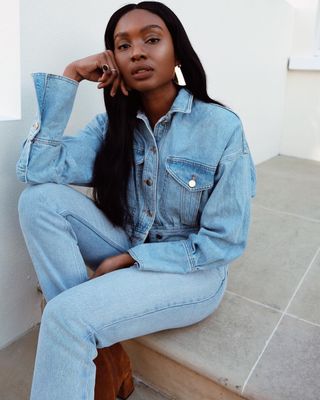
"I would like to see people of color is decision-making positions on a more permanent basis. Their opinions and knowledge are important in making sure brands are culturally sensitive when it comes to creative concepts for shoots, advertising etc. It’s important that their positions ensure diversity is a more permanent thing, rather than a seasonal trend. As an influencer or blogger, I would also like to see influencers of color being approached for collaborations with brands, not just for one-off content or a press trip but a national or international digital or print campaigns. Women of color can sell products just as much and to all audiences.” — Natasha Ndlovu, Model, Blogger, and Photographer
"I would love for the fashion industry to be more inclusive beyond the token Black person. Put Black people on staff, in a position to make decisions, and actually empower them to do so. It’s always interesting to note who has to freelance their content or pull from places other than their editorial staff when they want to get in on certain cultural conversations. In order to shift the conversation to one that doesn’t profit on rage clicks, we have to empower Black writers and editors to tell uplifting stories.” — Channing Hargrove, Fashion News Writer at Refinery29
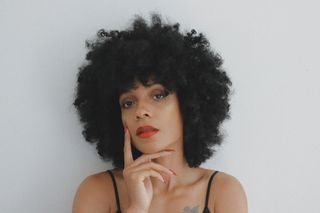
"I feel the industry loves Black culture but just not on Black people. I would love to see more Black creators being not only included in the conversation but at the forefront [of it] as well.” — Kia Marie, Content Creator and Stylist
"Across all industries, I think it’s important for shareholders to understand that diversity isn’t a buzzword but is instead a keyword. Specifically in creative industries, any enterprise that is lacking a diverse workforce is losing out on dynamic human capital and multidimensional perspectives. Having a diverse workforce shouldn’t be about filling a quota or being trendy. It should solely be about equal representation and fairness. It would behoove any company to realize that and approach talent procurement more holistically. It’s always daunting to work with companies that have zero to few employees of colors because the segregation is always palatable. I’ve witnessed former clients create racially insensitive material and push it as an alternative opinion because not one person on their team could sympathize with the erroneous treatment of minorities. I’ve also been the only minority in board meetings where I’m being told that diversity is not an agenda for influential brands. I truly believe in either situations, if major companies made a more fair attempt to hire minorities, then racially insensitive material, clothing, etc., would become less commonplace.” — Grace Bukunmi, Photographer

"I would like to see dialogue and results. When it comes to inclusion, it’s not only about hiring people of color or minorities, but including them in the conversations, giving them the platform to speak and do the work, and not allowing micro-aggressions stemmed by systemic racism and prejudice affect their ability to do the job at hand. I would like to see thorough research and education being facilitated. Watch a Black film, read a book by a Black author, educate yourself outside of Instagram, and ask the uncomfortable questions either to yourself or a person of color. (Please note, though, it isn’t a person of color’s role to educate.) As for results, creating a campaign around diversity and inclusion isn’t creating a difference if that is where it ends; and if it’s diversity and inclusion from the viewpoint of a majority all-white team, that defeats the purpose. A change of perspective has to always come from the top for the scope to be real. Be proactive!” — Mecca James-Williams, Contributing Market Editor at The Zoe Report
"The sad-but-true reality in the fashion world is that people of color are in the margins and not well represented. It would be particularly refreshing to see fashion houses and brands be more inclusive by creating an even playing field for every creative regardless of race. Culture and background will influence creativity, but the true beauty of the creative world will not be seen until everyone’s perspectives can be told and heard.'' — Ada Oguntodo, Fashion Influencer
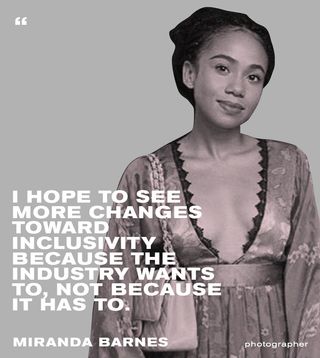
"I hope to see more changes toward inclusivity because the industry wants to, not because it has to." — Miranda Barnes, photographer
“I’d like to see more conversations followed by action steps to produce real change. I think right now we have so many talks, but there needs to be accountability.” — Fe Noel, fashion designer

"We are making some strides in the industry, but there is so much more we can do. As one of the few African-American independently owned luxury retailers, I know my responsibility in making sure that more people who look like me have an opportunity to become buyers and, in some cases, business owners. I’m deeply passionate about that mission and also making sure that more Black designers are being represented in stores.” — Sherri McMullen, Founder & Head Buyer for McMullen
"I personally do not think it is the responsibility of Black creatives to tell anyone how to make the industry inclusive. But as a Black woman, I would like to see more fashion spaces hire Black women in positions that make the important decisions. We need people who look like us to facilitate telling our unique stories. Performance representation was never okay, but it is 2019; it is not groundbreaking to have Black models on the runway. We need Black women as art directors, production managers, set designers, senior media editors, senior writers, and so on. There is so much material on how to hire and retain Black employees. There are organizational development consultants who can facilitate these processes for media companies and fashion/beauty brands. Hire them.” — Subrina Heyink, Stylist and Vintage buyer @subrinaheyinkvintage
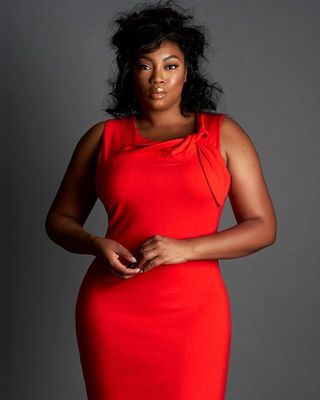
"I’m proud of the changes we’re starting to see in the fashion industry, but I need the use of plus models to not just be a PR moment or one-time thing. It should be a regular thing from runway shows to editorials and print campaigns. I look forward to the day that not just retailers regularly use us but high-end fashion designers as well. Also the use of Black plus models and the many variations in look still aren’t represented enough. We see size diversity happening, but let’s not forget about the racial diversity that needs to happen too. We are more than just two types of looks out here. We want a chance to slay and represent the diversity in Black beauty as well.” — Liris Crosse, Model
"Inclusivity and diversity should never be contrived or fake. For a brand to be inclusive, it really has to come from the top. I would love to see an introduction to more creative teams with concepts that are aligned with the real diverse world we live in today.” — Gilleon Smith, Casting Director

"I would like to see more diversity in influencers at shows and events. When I go to shows, the influencers rows are packed with the same people over and over, and it’s not very diverse, whether ethnically or in terms of body shape. Why aren’t there girl-next-door influencers of color? I keep asking myself. I think companies need to start looking and finding influencers of color because they do exist, but they’re never given opportunities because their followings aren’t that big, so they never get discovered. It’s a vicious circle. Companies need to take one big leap of faith for a change.” — Ellie Nes, Influencer, @slipintostyle
"Today Scandinavian fashion and design are making waves worldwide. My vision for 2019 is that the Scandinavian fashion industry will extend this impact, so Scandinavia will also become associated with diversity. We are a minority, but we’re here. My hope for the industry going forward is that it reflects the Black presence in society. Be open, be curious, and be the change.” — Maya Soul Paustian, Stylist
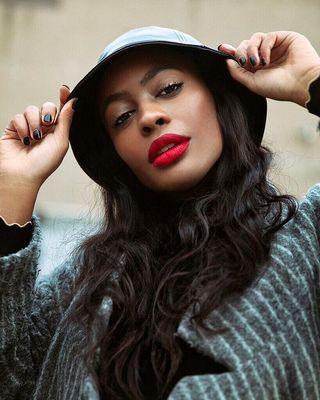
“It’s absolutely vital to hire more people of color. We must be the ones reporting, writing, photographing, and orchestrating our own stories so that they are told the right way. Having one poster child for people of color on staff does not qualify as inclusive. Far too often, people of color are held in stagnant positions. We need to demand more respect and ask for what we deserve. True equality should not be the exception; it should be the standard. Sprinkling in a few models of color on the runway does not make you a diverse designer. Adding two or three shades to extend your foundation lineup does not mean that your beauty brand makes products that suit all skin tones. More of us need to be in the room, speaking up, and making decisions. Once we build community in positions of power and lead together, real change will happen.” — Maya Allen, Beauty Editor at Marie Claire
Next: These Are the Black Designers I'm Obsessed With ATM

Jasmine Fox-Suliaman is a fashion editor living in New York City. What began as a hobby (blogging on Tumblr) transformed into a career dedicated to storytelling through various forms of digital media. She started her career at the print publication 303 Magazine, where she wrote stories, helped produce photo shoots, and planned Denver Fashion Week. After moving to Los Angeles, she worked as MyDomaine's social media editor until she was promoted to work across all of Clique's publications (MyDomaine, Byrdie, and Who What Wear) as the community manager. Over the past few years, Jasmine has worked on Who What Wear's editorial team, using her extensive background to champion rising BIPOC designers, weigh in on viral trends, and profile stars such as Janet Mock and Victoria Monét. She is especially interested in exploring how art, fashion, and pop culture intersect online and IRL.
-
 Amal Clooney Wore Controversial Boots to the Airport That'd Make TSA Squirm
Amal Clooney Wore Controversial Boots to the Airport That'd Make TSA SquirmThey're not exactly travel friendly, but they are incredibly chic.
By Erin Fitzpatrick
-
 The Top 11 Celebrity Stylists Right Now and Who They're Dressing
The Top 11 Celebrity Stylists Right Now and Who They're DressingThe best in the biz.
By Erin Fitzpatrick
-
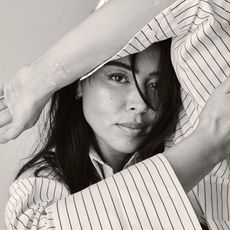 Lauren Chan's Collaboration With Universal Standard Is Redefining Luxury
Lauren Chan's Collaboration With Universal Standard Is Redefining Luxury"People look like they feel powerful in these garments."
By Ana Escalante
-
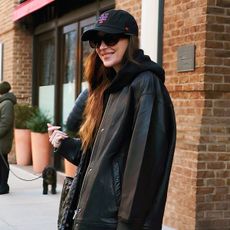 Dakota Johnson Wore the Fashion-Person Legging Outfit That's Perfect for Flights
Dakota Johnson Wore the Fashion-Person Legging Outfit That's Perfect for FlightsLove a good legging outfit trend.
By Allyson Payer
-
 J.Lo Wore a Completely Sheer Top and Controversial Accessory for Her SNL Arrival
J.Lo Wore a Completely Sheer Top and Controversial Accessory for Her SNL ArrivalIn true J.Lo style.
By Allyson Payer
-
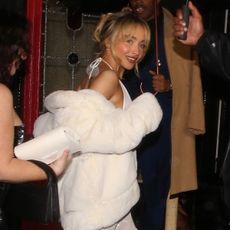 These Are the Only Grammys After-Party Looks You Need to See
These Are the Only Grammys After-Party Looks You Need to SeeFrom Sabrina Carpenter to Selena Gomez.
By Eliza Huber
-
 Mariah Carey Just Snuck Into the Grammys in a Hip-High-Slit Naked Dress
Mariah Carey Just Snuck Into the Grammys in a Hip-High-Slit Naked DressShe skipped the red carpet.
By Erin Fitzpatrick
-
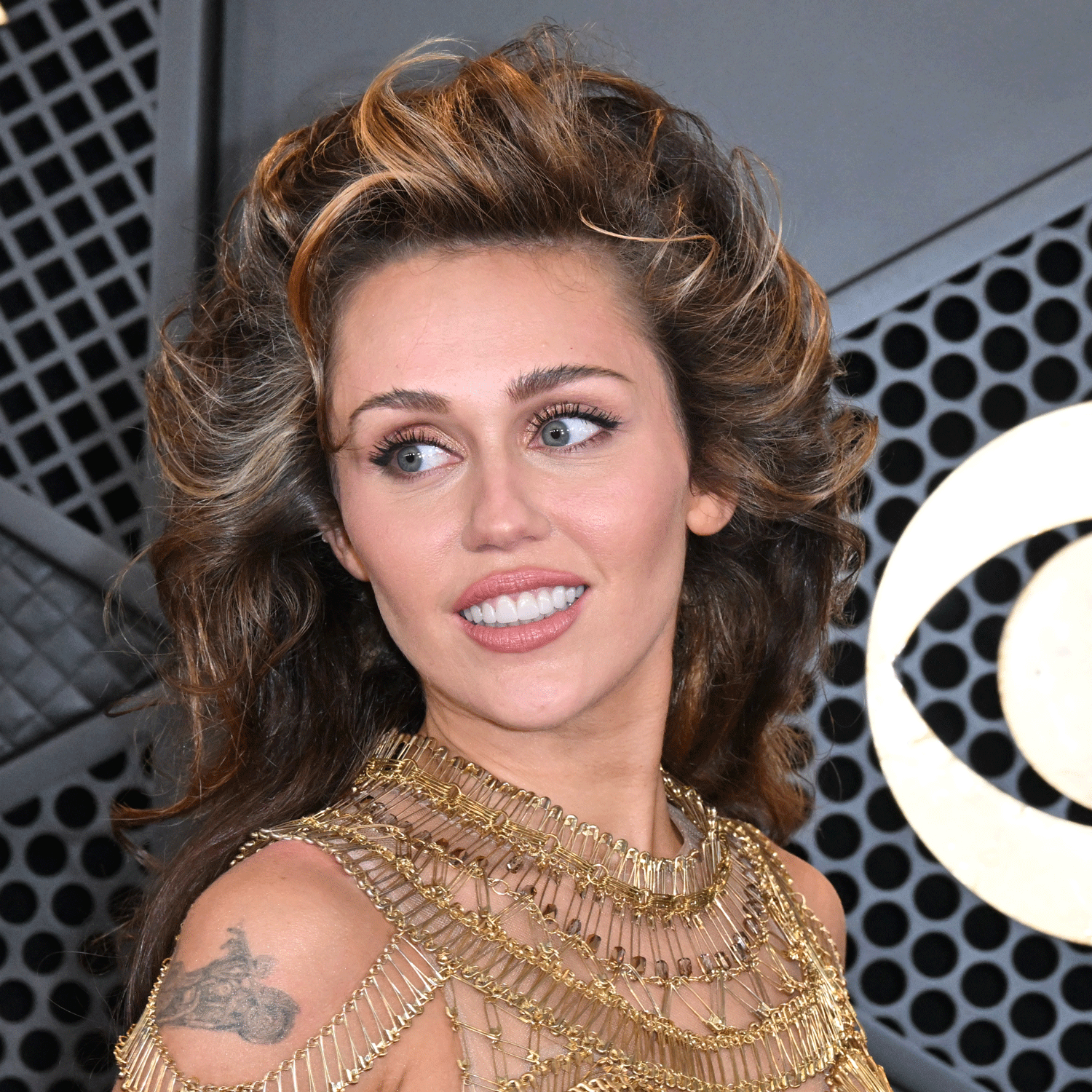 Miley Cyrus Wore a Level-10 Naked Dress Made of Safety Pins to the Grammys
Miley Cyrus Wore a Level-10 Naked Dress Made of Safety Pins to the GrammysShe never misses.
By Grace O'Connell Joshua

